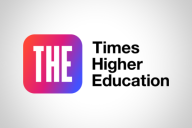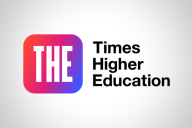You have /5 articles left.
Sign up for a free account or log in.
CHICAGO -- At last week’s Forum on Education Abroad conference, a prevailing theme was the need for universities to be more intentional – and ambitious – in crafting learning outcomes for their overseas programs.
“Our aspirations are weighed down by deeply rooted consumer values, tacit agreements, let’s call them, which are abundantly visible throughout the wider American educational system, but which arguably do not serve desirable learning outcomes in study abroad,” Lilli Engle, the director of the American University Center of Provence, said in her keynote speech.
Engle criticized the field’s emphases on student satisfaction as opposed to measurable learning and growth, on inclusive access versus selectivity and merit, and on the provision of familiar comforts rather than exposure to difference. She bemoaned the focus on increasing the numbers of students going abroad to the exclusion of an emphasis on outcomes, noting in particular data from the Forum that show that only 22 percent of institutions and program providers assess students’ foreign language acquisition.
“The solution to bringing more identifiable value to our field, value that students can experience and their future employers recognize, hinges on simple, powerful principles we in this room can systematically bring to bear: intentionality, expressed in lucid mission statements and in clearly targeted learning outcomes geared to each study abroad program we organize or support; differentiation, which highlights program differences according to the learning goals and comparative levels of adaptational challenge; intervention, which is skilled and geared toward experiential learning; and assessment, which is systematic, reliable and appropriate to each program’s goals,” Engle said.
She went on to propose a six-level, developmental classification of study abroad program types (see box below) according to the “intensity of the student encounter with cultural difference” as well as the “intervention” strategies employed by program leaders “in order to capitalize on that learning potential.” (One key finding in research on study abroad in recent years has been the need for mentoring or targeted “interventions” on the part of faculty or staff in order to maximize students’ intercultural learning abroad: when simply left alone, students are unlikely to make gains in intercultural competence, and in some cases will even regress.)
Engle’s typology ranged from the “educational tour” (level one), which would be characterized by modest student learning objectives such as “experience international travel” and “enjoy and understand academic subject matter within a living context,” and which could be appropriate for a curriculum-embedded, faculty-led program, to the “cultural integration” program (level six). The latter would encompass more complex outcomes such as “cultivate empathy and perspective shifting” and “interpret meaning within cultural context,” and could align with the goals of a semesterlong program.
| Engle’s Developmental Model of Study Abroad Program Types | |||
|
6: Cultural Integration |
|||
|
5: Cross-Cultural Engagement |
|||
|
4: Cross-Cultural Encounter |
|||
|
3: Cross-Cultural Contact |
|||
|
2: Cross-Cultural Exposure |
|||
|
1: Educational Tour |
|||
“Between a first taste of international travel on one side, and the perspective-shifting on the other, there is a whole spectrum of intercultural learning outcomes worthy of our attention,” said Engle, who emphasized that a study abroad experience of any duration can be meaningful as long as the outcomes are intentionally and realistically designed. “What I’m finding though is that many times, we don’t know why we’re doing the things that we’re doing, and it undermines the targeted objectives that we can then formulate and aim towards,” she said.
“So a lot of it is just an effort to articulate what is possible for us at all levels of study abroad, so we can say that it is all good if it’s done with intentionality and focus. Without that intentionality, it’s the student’s consumerism that fills that void. So we have to fill it; we have to fill it before they can fill it with what will come naturally to them.”
Other sessions at the conference focused on specific strategies for maximizing intercultural learning outcomes through reflective coursework and experiential learning activities. Models discussed included the Council on International Educational Exchange’s credit-bearing Seminar on Living and Learning Abroad, which is offered to semesterlong study abroad students at a majority of its sites.
Michael Vande Berg, a consultant and formerly the vice president for academic affairs at CIEE, highlighted two challenges related to the approach: getting students interested in signing up for a seminar on intercultural theory, and training faculty to adequately teach it. Faculty attend training workshops and go through at least a yearlong coaching process, but even so Vande Berg said it’s typically not until the third iteration of the course that an instructor succeeds in bringing about significant intercultural competency gains in students, as measured by the Intercultural Development Inventory.
Another program provider, the Institute for Study Abroad-Butler University, has been piloting a “Cultural Integration Program” that approaches the question of integration and intercultural learning through the lens of “community.” Students are asked to reflect on what a community is and what it means to be a member of one, and to engage in their new community through an internship or volunteer work, or by actively joining a student group, sports team or community organization.
And Susquehanna University is now in its fourth year of a required "study away" experience (of at least two weeks in length, international or domestic) in which students are required to participate in five required pre-departure workshops and enroll in a two-credit reflective class when they return. Scott Manning, the director of cross-cultural programs and an associate professor of French, briefly described the learning goals for the course decided on by Susquehanna’s faculty: they include developing a working definition of culture, recognizing how students’ own attitudes and behaviors affected the quality of their cross-cultural experiences, and reflecting on their own personal growth and social responsibilities.
Looking more broadly, Mark Salisbury, the assistant dean and director of institutional research and assessment at Illinois's Augustana College, and co-author of the 2012 book Study Abroad in a New Global Century: Renewing the Promise, Refining the Purpose, argued that there is a need to think more intentionally about how and where a given study abroad experience fits developmentally into a student’s overall education.
During a session focused on global learning outcomes, Salisbury described findings from the multi-institution Wabash National Study of Liberal Arts Education, which measured gains in intercultural competence across three increasingly complex dimensions: inclination to engage in diverse contact, level of comfort when engaging in diverse contact, and relativistic appreciation of difference. While students who studied abroad gained in intercultural competence, this effect was modest and limited to just one sub-scale: the inclination to engage in diverse contact. Meanwhile, two other on-campus experiences -- informal diverse interactions (the survey asked how often students had serious conversations with others who were different than them) and integrative learning experiences (such as service learning) -- were also associated with gains in intercultural competence, and in more than one sub-scale (see table below).
Wabash National Study of Liberal Arts Education Outcomes Regarding Intercultural Competence
|
Experiences that produced a statistically significant effect on intercultural competence* |
Overall Effect |
Effect on Inclination to Engage in Diverse Contact |
Effect on Level of Comfort when Engaging in Diverse Contact |
Effect on Relativistic Appreciation of Difference |
|
Study Abroad Participation |
.143 |
.242 |
None |
None |
|
Informal Diverse Interactions on Campus |
.282 |
.269 |
.237 |
.132 |
|
Integrative Learning Experiences on Campus |
.143 |
.095 |
None |
.178 |
*After controlling for pre-college characteristics, other college experiences that might increase intercultural competence, institutional differences, and a pretest measuring intercultural competence
Salisbury said the findings raise the question of whether the “stereotypical” study abroad experience – by this he meant “the grand tour” – should happen earlier rather than later in the college experience, “if all it does is just incline you to diverse contact.”
“This doesn’t mean that we give up on trying to develop programs that develop students in more complex ways,” Salisbury continued, “but if we think really specifically about how each program might have an effect developmentally, I think that does two things: one is it shapes where we might place it in the students’ developmental process, and two, it shapes how we design that program and how we connect it to things that happen after they return.”








